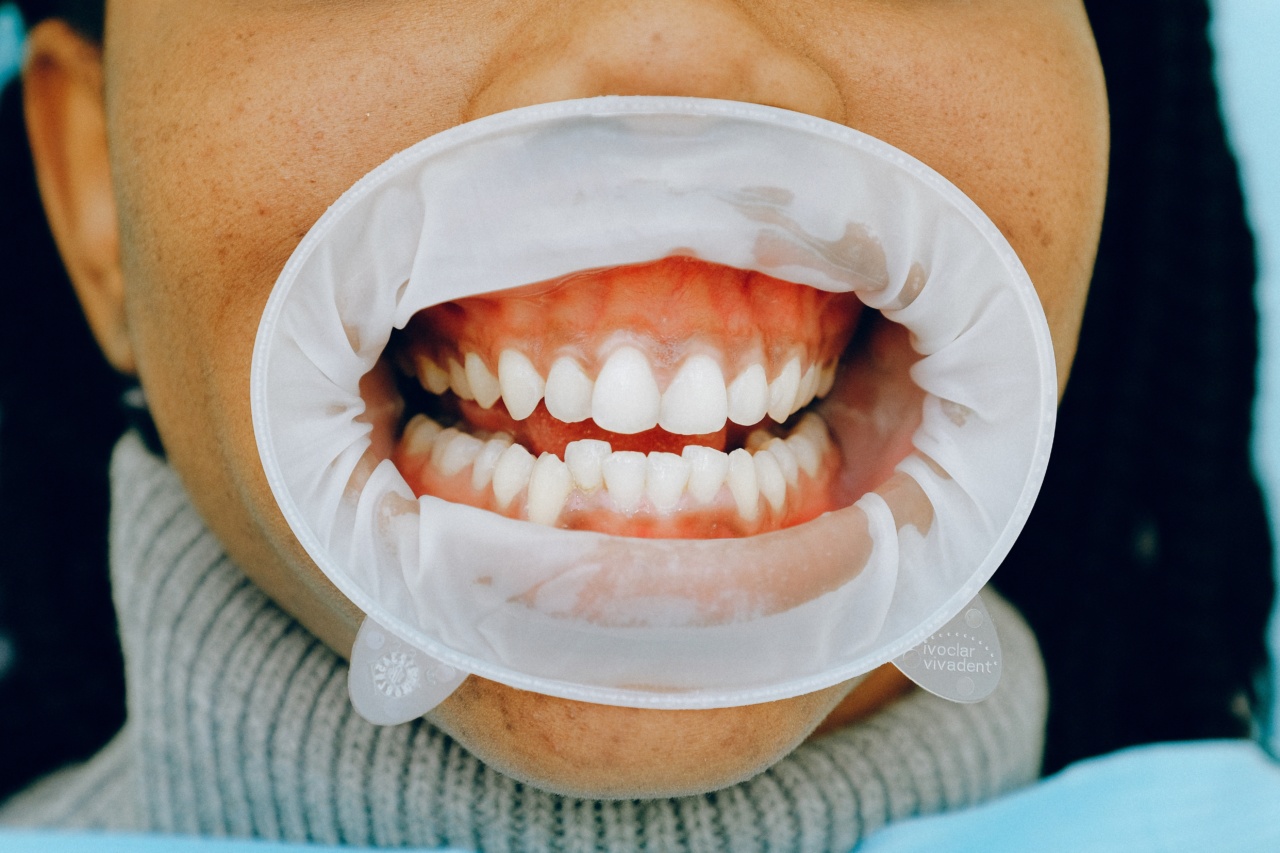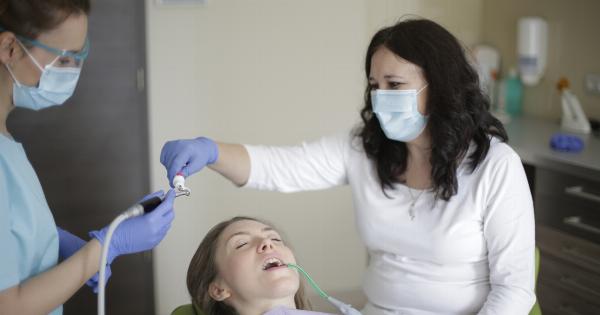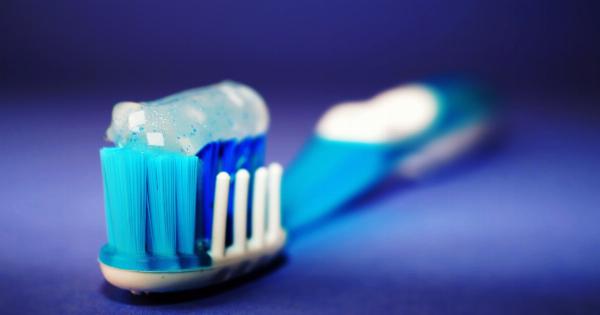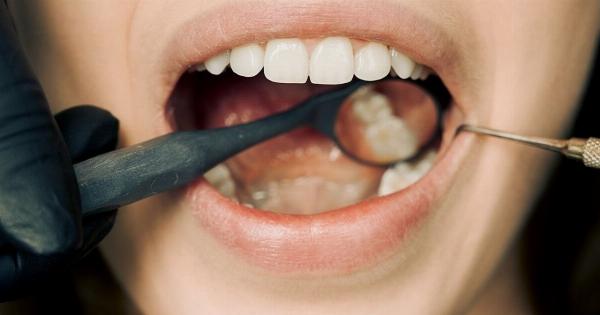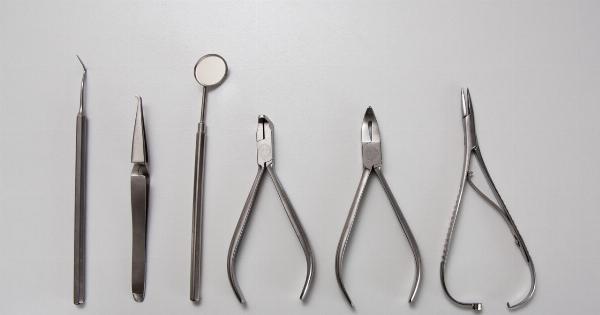Are you experiencing bleeding gums while brushing your teeth or flossing? Don’t ignore it, as it might be a sign of poor dental health.
Bleeding gums are one of the most common signs of gum disease, a condition that affects millions of people worldwide. Gum disease is a bacterial infection that affects the gums and bone supporting the teeth. If left untreated, it can lead to tooth loss and even other health problems. In this article, we will explore the causes, symptoms, and treatment of bleeding gums.
Causes of Bleeding Gums
Bleeding gums can be caused by several factors, including:.
1. Gingivitis
Gingivitis is the earliest stage of gum disease, and it is caused by the buildup of plaque on the teeth. Plaque is a sticky film of bacteria that forms on the teeth and gums every day.
If not removed by brushing and flossing, it can harden into tartar, which can only be removed by a dental professional. The bacteria in plaque and tartar produce toxins that irritate the gums, causing inflammation, redness, and bleeding.
2. Periodontitis
Periodontitis is a more severe form of gum disease that occurs when gingivitis is left untreated. In periodontitis, the bacteria in plaque and tartar start to destroy the gums and bone supporting the teeth.
This can lead to tooth loss and even other health problems.
3. Brushing too hard
If you brush your teeth too hard or use a hard-bristled toothbrush, you can damage the gums, causing them to bleed. It’s important to brush your teeth gently but thoroughly, using a soft-bristled toothbrush.
4. Nutritional deficiencies
A deficiency in vitamins, such as vitamin C and K, can weaken the gums, making them more prone to bleeding. Eating a healthy and balanced diet can help improve the health of your gums.
5. Medications
Certain medications, such as blood thinners, can cause bleeding gums. If you are taking any medication and experiencing bleeding gums, consult your dentist or doctor.
Symptoms of Gum Disease
Bleeding gums are not the only symptom of gum disease. Other symptoms include:.
1. Red, swollen, or tender gums
Gums that are red, swollen, or tender can be a sign of gum disease. Healthy gums should be pink and firm.
2. Bad breath
Bacteria in the mouth can cause bad breath, also known as halitosis, which can be a sign of gum disease.
3. Loose teeth
As gum disease progresses, it can lead to the loosening and shifting of teeth. This can ultimately lead to tooth loss if left untreated.
4. Receding gums
Gum disease can cause the gums to pull away from the teeth, exposing the roots. This can make the teeth appear longer than usual.
Treatment for Bleeding Gums
If you are experiencing bleeding gums, it’s important to visit your dentist for an evaluation. Depending on the severity of your gum disease, your dentist may recommend one or more of the following treatments:.
1. Professional teeth cleaning
A professional teeth cleaning, also known as a dental prophylaxis, can remove the plaque and tartar buildup on your teeth and gums. This can help reduce inflammation and bleeding.
2. Scaling and root planing
If you have more severe gum disease, your dentist may recommend scaling and root planing. This is a deep cleaning procedure that removes plaque and tartar from below the gumline and smooths the root surfaces to reduce the buildup of bacteria.
3. Antibiotics
If you have an infection in your gums, your dentist may prescribe antibiotics to help fight the bacteria.
4. Surgery
In severe cases of gum disease, surgery may be necessary to remove the infected gum tissue and restore the health of your gums and teeth.
Prevention of Gum Disease
The best way to prevent gum disease is to practice good oral hygiene habits. This includes:.
1. Brushing your teeth twice a day
Brush your teeth twice a day with a soft-bristled toothbrush and fluoride toothpaste. Be sure to brush all surfaces of your teeth and your tongue.
2. Flossing daily
Floss your teeth once a day to remove plaque and food particles from between your teeth and under the gumline.
3. Using mouthwash
Rinse your mouth with an antiseptic mouthwash to kill bacteria and freshen your breath.
4. Eating a healthy diet
Eat a diet rich in fruits, vegetables, whole grains, and lean protein to help keep your teeth and gums healthy. Avoid sugary and acidic foods and drinks.
5. Quitting smoking
Smoking can increase your risk of gum disease and other health problems. Quitting smoking can improve your oral and overall health.
Conclusion
Bleeding gums are a common sign of gum disease, a condition that can lead to tooth loss and other health problems if left untreated. If you are experiencing bleeding gums, it’s important to visit your dentist for an evaluation and treatment.
Practicing good oral hygiene habits and eating a healthy diet can help prevent gum disease and promote the health of your teeth and gums.
